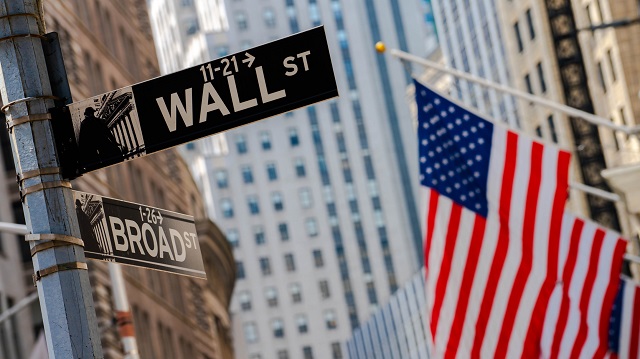
New York, U.S. | XINHUA | U.S. stocks declined in the volatile past week as a surge in bond yields unnerved investors who rushed to dump risk assets, especially high-flying shares.
For the week ending Friday, the Dow lost 1.8 percent, while the S&P 500 and the Nasdaq fell 2.5 percent and 4.9 percent, respectively. That marked the Nasdaq’s biggest drop since the week ended Oct. 30, according to FactSet data.
Despite this week’s slide, the three major averages all finished February with modest gains. The S&P 500 and the Dow climbed 2.6 percent and 3.2 percent, respectively, while the tech-heavy Nasdaq eked out a monthly gain of 0.9 percent.
The S&P U.S. Listed China 50 index, which is designed to track the performance of the 50 largest Chinese companies listed on U.S. exchanges by total market cap, slumped 11 percent for the week, but still logged a rise of 2.3 percent for the month.
Bond yields continued to be a focus on Wall Street this week. The yield on the benchmark 10-year U.S. Treasury jumped more than 16 basis points to 1.614 percent on Thursday, its highest level since February 2020, before retreating to about 1.4 percent on Friday. The 30-year U.S. Treasury yield also hovered at a relatively high level.
Over the last few years, a common narrative in the bond markets has been that yields are at, or near, all-time lows. Low yields result in low borrowing costs, attractive mortgage rates, and have arguably provided a boost to the equity markets for investors starved for yield.
“In our view, the biggest driver is higher inflation expectations. If market participants expect higher inflation down the road, they will want to be compensated more today (in the form of higher yields) for long-dated fixed income products,” analysts at Zacks Investment Management said in a note on Saturday.
“Higher bond yields could have several implications investors should keep in mind: among them, pressure on high valuation areas of the stock market,” they noted.
Investors were partly relieved as a key measure of inflation showed price pressures were muted.
U.S. personal consumption expenditures (PCE) price index rose 0.3 percent in January and was up 1.5 percent year over year, the Bureau of Economic Analysis reported on Friday.
The so-called PCE price index is the Federal Reserve’s closely-watched measure of inflation and last month’s reading was below the Fed’s 2-percent target.
Fed Chairman Jerome Powell kept a dovish stance in his semi-annual testimony to Congress on Tuesday and Wednesday. He reiterated that U.S. interest rates will remain low for some time and the central bank will keep buying bonds to support the U.S. economy.
“The economy is a long way from our employment and inflation goals, and it is likely to take some time for substantial further progress to be achieved,” said the Fed chief.
Powell played down concerns of an inflationary outbreak as the Congress is moving ahead with President Joe Biden’s 1.9-trillion-U.S.-dollar COVID-19 relief package.
“Inflation dynamics do change over time, but they don’t change on a dime, and so we don’t think how a burst of fiscal support or spending that doesn’t last for many years would actually change those inflation dynamics,” he said, adding economic and demographic forces have been pulling inflation down for a quarter of a century.
On the data front, U.S. initial jobless claims, a rough way to measure layoffs, dropped by 111,000 to 730,000 in the week ending Feb. 20, the Department of Labor reported on Thursday. Claims were expected to total 845,000 in the latest week.
*****
Xinhua
 The Independent Uganda: You get the Truth we Pay the Price
The Independent Uganda: You get the Truth we Pay the Price



